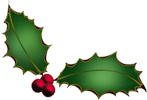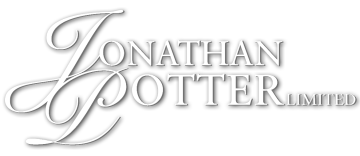Biographies of Some of the More Famous Cartographers
Jean LATTRE
Jean Lattré was an engraver and publisher active in Paris in the eighteenth century. Lattré earned the position of ‘Graveur Ordinaire du Roi’ which he held from 1776 to 1782. He also engraved maps for Robert de Vaugondy, Jean Janvier and Rigobert Bonne, all renowned French mapmakers dominating this era of atlas production.
Lattré’s own publications include, amongst others, the “Atlas Moderne” first published in 1771 and with subsequent editions in 1783 and 1793, as well as a map of the “Etats Unis” published in 1784.
Aniello LAMBERTI
Aniello Lamberti was an engraver in Florence and Naples and was responsible for a very scarce group of playing card maps, published in Florence in book form as “Nuovo Atlante Generale ...”. Many packs of early playing cards were produced with a geographical theme, though few actually show maps as these do, hence such cards have become rare and sought after items. The cards were also issued as a so-called ‘Minchiate’ pack of Tarot cards in 1779. Augustus Da Rabatta, a priest and geographer, and Giovanni de Bailloui, ‘primo geographo’ and surveyor of Tuscany, edited the atlas. On each engraving the map usually appears in the upper part of the card, while the lower part contains a list of the regions depicted with the principal towns; some plates include two maps.
The Family LOTTER
The Lotter family were and engraves and publishers based in Augsburg with a prolific output of maps in the eighteenth century.
Tobias Conrad Lotter (1717-1777) worked with Georg Matthaus Seutter (his father-in-law – he married Georg’s daughter in 1740) and Tobias Lobeck. In 1756 he succeeded his father-in-law jointly with Albrecht Seutter’s son and Georg Balthasar Probst, also re lated by marriage. In 1758 Lotter inherited half the copperplates of the Seutter firm and was able to set up his own, independent publishing house that same year. Some of his best known atlas works are the “Atlas Minor” (c.1744), the “Atlas Der Ganzen Welt” (1748) and the “Atlas Novus” (c.1770), as well as numerous, important, single map – the “REcens Edita Totius Novi Belgica” of c.1760 being just one of note.
The Seutter/Lotter collaboration was recognised as one of the great German publishing endeavours of the eighteenth century.
Tobias Conrad was succeeded by his sons Matthaus Albrecht Lotter and Georg Friedrich Lotter, and other family members were also involved.
LONDON MAGAZINE
“The London Magazine: or, a Gentleman’s Monthly Intelligencer” was issued monthly from April 1732 until June 1783 and was a worthy competitor of other monthly magazines being produced at this time, most notably the “Gentleman’s Magazine”. The maps, views, diagrams and other illustrations contained therein were carefully drafted and engraved, and related to pertinent political, social, economic, historical and geographical issues of the day.
Johannes de LAET
Johannes de Laet (1593-1649) was one of the directors of the Dutch West India Company. Using the records of the company and his numerous personal contacts de Laet compiled an account of the Americas, which was first published in 1625, containing ten maps. The enlarged second edition, of 1630, added four maps devoted to the eastern seaboard of North America.
The maps were drawn and engraved by Hessel Gerritsz, initially official map-maker to the Dutch East India Company, and later map-maker to the West India Company, regarded as one of the greatest cartographers of his day (he was chosen for these posts in preference to his teacher, Willem Blaeu). The account was published with the title “Nieuwe Wereledt Ofte Bescrijvinghe Van West-Indien”.
It is hard to overestimate the importance of this series of maps by de Laet and Gerritsz; they form an outstanding cartographic picture of the New World - perhaps the definitive collection of regional maps of America in the seventeenth century. Virtually all these maps were prototype delineations for the regions they depicted; among the many map-makers who modelled their maps on them were the Blaeus, Hondius-Jansson and Sanson.
John LUFFMAN
John Luffman, who flourished 1776-1820, was an engraver, publisher and goldsmith working out of London. His published works include, amongst others, a 1776 edition of Taylor and Skinner’s “Roads, New Pocket Atlas” (1803) and “Universal Atlas” (1815). His best known work is perhaps “New Pocket Atlas And Geography Of England And Wales” with curious circular maps of the county. He also provided the maps and charts for Serres’ “The Little Sea Torch”, a description of many Mediterranean locations from which this miniature plate comes. Maps showing the island of Elba alone are difficult to find and this is an attractive example.
John LOTHIAN
Scotsman John Lothian, who flourished 1825-46, was a geographer and publisher located at 41 St. Andrew Square, Edinburgh. His early publications focused very much on his home; “Plan of Edinburgh” (1825) and also “Atlas Of Scotland” (1826-30), but later works included such items as the “Revised People’s Atlas” published in Glasgow in 1846 amongst other works.
John LODGE
John Lodge (fl.1754-1796) was a highly-regarded engraver and prolific map-maker, working in London, who had been apprenticed to Thomas Jefferys. His output was almost exclusively commissioned from him by a variety of publishers, themselves not noted as map-makers, but who required maps for their books, or who had manuscript materials they wished to see into print.
Lodge was therefore involved with the engraving of a number of very important separately published maps, and a very large number of maps issued in magazines and periodicals, geographical dictionaries, travel accounts, regional histories and the like. The “Gentleman’s Magazine” was just one such publication. Lodge’s maps tend to be attractively engraved in a characteristic, clear but restrained style.
John Lodge the younger was apprenticed to his father in 1785 and later worked with William Palmer at Islington.
Jan Huygen Van LINSCHOTEN
Jan Huygen Van Linschoten (c.1563-1611) was a Dutch traveller, historian and Secretary to the Portuguese archbishop in Goa 1583-1588. He experiences were published in the “Itinerario ...”, seen as one of the greatest travel books of any period. The book documents much information concerning the Portuguese colonies and their trade at the point when both the Dutch and English maritime trading nations were becoming established and capable of competing for trade, which had, hitherto, been controlled strictly by the Portuguese. Portugal’s resources - particularly of capable manpower - were extended beyond that physically small country’s limits.
The book was published with Dutch text in 1596 in Amsterdam – with a world map by Petrus Plancius. It was published with Latin text 1599 and John Wolfe’s 1598 English text edition (with a world map by Abraham Ortelius) is entitled “Voyages Into The East And West Indies”.
In addition to the importance of the cartographic content of Linschoten’s map, they are also amongst the most lavishly designed and engraved of any period and represent Dutch mapmaking at its most stimulating period.
Humphrey LHUYD
Humphrey Lhuyd (1527-1568) was born at Denbigh and became a physician and antiquary. His fellow townsman, Richard Clough, provided Lhuyd's link with Abraham Ortelius of Antwerp that resulted in the wide dissemination of his cartographic achievement – Lhuyd's map of Wales, for which he is perhaps best known. Clough, a merchant, held the post of factor to Sir Thomas Gresham in Antwerp, then one of the continent’s great commercial centres. Lhuyd was also a Member of Parliament.
As the author of (apart from works on the calendar, health and Welsh topography) the map “Cambriae Typus”, one of the earliest known maps of Wales, Lhuyd had provided the basis for the Ortelius map, published 1573, and then for the Jodocus Hondius map of 1607 that was engraved by Pieter Van Keere.
While on his deathbed Lhuyd wrote to Ortelius dedicating and sending to him maps of England and Wales and the manuscript of his “Commentarioli”. In the “Theatrum Orbis Terrarum” Ortelius described Lhuyd as “nobilis et eruditus vir”. Lhuyd was buried in the parish church of Denbigh in a vault adjacent to that of the Clough family.
Samuel LEWIS
Father and son Samuel Lewis were London publishers in the nineteenth century. However it was Samuel the elder (d.1865) who was responsible for “A Topographical Dictionary Of England”. This was published in five volumes from 1831 with maps engraved by R.Creighton. Lewis was to go on to produce similar dictionaries of Wales (1833), Ireland (1837) and Scotland (1846). He was also responsible for an atlas of Guernsey, Jersey and Man, a travellers’ guide and a plan of London in 1850.
Victor LEVASSEUR
Victor Levasseur was a French cartographer responsible for the “Atlas National Illustré Des 86 Departements… De La France” first published in 1845 with subsequent editions thereafter. Levasseur’s imagination and style, employed in the vignette illustrations that surround the maps in this atlas insure the work will be remembered as being one of the most appealing and decorative of nineteenth century France.
Levasseur was also responsible for the “Atlas Classique Universel” and the “Atlas De Cartes Historiques”.
Robert LAURIE
Robert Laurie (c.1755-1836) and James Whittle (1757-1818) were map, chart and print-sellers and cartographic publishers at the ‘Golden Buck’ No 53 Fleet Street. In 1794 they took over the business of Robert Sayer and operated from there. From about 1797, Laurie devoted most of his time to the publishing business. A large number of maritime atlases and pilots, and revised editions of the works of Kitchin, Jeffreys and Après de Mannevillette were issued between the years 1794 and 1812. Laurie retired in 1812 and died at Broxbourne in 1836. After Laurie’s retirement James Whittle carried on the business with his partner’s son, Richard Holmes Laurie, until his death in 1818. Ultimately the business formed part of the famous nautical chart firm of Imray, Laurie, Norie &Wilson.
Further information about many of these cartographers may be found in the volumes of Tooley's Dictionary - an invaluable addition to any map collection or single item.



